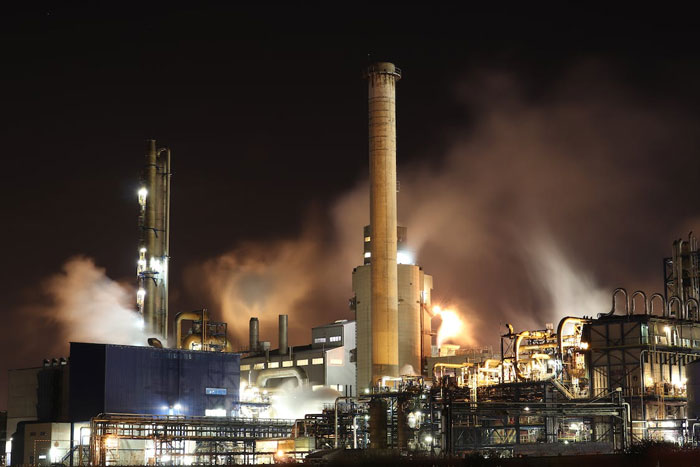
This post discusses the chemical compound ammonia and the hazards associate with it and how to handle it safely; it uses and properties.
Please, continue reading:
One of the important chemicals used in producing many items and goods we use in daily life is ammonia.
For over a century, ammonia has been produced globally and is purchased by many medical firms and industries.
It is a chemical that should be handled with caution because of some hazards involved with it, otherwise it can cause harm.
This article will guide you on how to use and dispose the chemical following safety measures provided.
What is Ammonia?
Ammonia is a colorless gas constituted from nitrogen and hydrogen atoms represented as NH3 as the formula.
It is also known for its very strong smell.
Ammonia is everywhere and is used by everyone in one form or another. But, it is dangerous and harmful when concentrated.
In the US, only authorised facility or organization can produce, store or use ammonia.
Common Ammonia Hazards
Breathing in ammonia gas is very toxic to health; it can damage the respiratory system when inhaled.
Ammonia is flammable, it can explode when exposed or stored close to fire or heat. If it enters the eyes, it could cause irritation or blindness.
Ammonia Safety Handling Procedures
There are lots of ways you can handle ammonia to minimize the risk of an accident:
- Putting on a safety gear whenever you are handling ammonia is vital. Safety gear is a kit that has a heavy duty long-sleeved coat, coveralls, full-face respirator, rubber gloves, and eye glasses that can protect the eyes and the rest of the body from chemicals.
- Having clean water nearby while working with ammonia is something you should put in mind. Close proximity to water ensures you can quickly rinse your hands and eyes if the chemical comes in contact with them.
- Take enough time to position the nurse tank close to the source tank. This will minimize the probability of spills causing accidents.
Ammonia Safety Storage Procedures
- Always make sure ammonia is stored under pressure.
- Do not use corrosive storage containers; make use of only non-corrosive storage containers.
- Observe all storage tanks and hoses regularly, and service them when needed.
- Always keep protective gear on hand whenever you store ammonia in mass.
- Paint tanks in light and reflective colours such as silver or white.
Ammonia Safety Disposal Procedures
Follow these procedures in order to dispose ammonia appropriately:
- Calculate the container dilution capacity: measure the amount of ammonia you have in gallons or ounces. Ten gallons of ammonia need hundred gallons of water to dilute. The first container must be big enough to accommodate the analysed amount of water and the added ammonia. The second container only needs to be big enough to accommodate the ammonia.
- Fill the containers: Making use of measuring equipment, pour the water into the first container. Measure both of the containers to make sure the ammonia equals 10% of the water.
- Gently add the contents of the second container into the first container. Do not pour into water in a hurry, because it causes powerful chemical reaction.
- Sewer the aqua ammonia: Immediately the solution is fused, flush away the aqua ammonia into a secured drainage or oil system. Do not dispose the solution in surface water bodies like ditches, storm water drains, or ponds; lakes, sanitary sewers, or streams, or wetlands.
How to Handle Exposures to Ammonia
Just in case you get too exposed to ammonia or it comes in contact with any part of your body, follow these procedures to ensure safety:
- Ammonia in the eyes: If ammonia enters the eyes, rinse them with a huge quantity of water, raising the upper and lower eyelids.
- Ammonia on the skin: Whenever ammonia touches the skin and you begin to notice irritation, carefully brush away any excess chemical and flush affected skin with water. If the chemical enters clothing, immediately pull off clothing and flush with enough clean water.
- If someone inhales a high volume of ammonia, take him or her to an open space for fresh air immediately. If the person stops breathing, administer artificial respiration.
Ammonia Properties (Physical and Chemical)
Physical properties: Ammonia is a colorless gas with a sharp, penetrating odor. It has a boiling point that is -33.35 °C and also has a freezing point that is -77.7 °C.
Ammonia gas can be liquefied, but due to its really low boiling point, liquid ammonia must be kept at a low temperature and high pressure.
Chemical properties: Ammonia is not a strong base. It combines with different acids to form ammonium salts, which are significant chemicals in many manufacturing firms.
Ammonia easily melts in water in an exothermic reaction, to make aqueous ammonia solution, also known as ammonium hydroxide (NH4OH).
NH3 + H2O → NH4OH
Liquid ammonia is a significant non-aqueous solvent, which can melt many alkali metals and alkaline-earth metals to make blue-coloured conductive solutions.
Ammonia Preparation
When we heat up ammonium chloride (NH4Cl) and slaked lime Ca(OH)2 slowly ammonia gas would be produced.
Ammonia Uses
Ammonia is really useful just like other significant nitrogen compounds, like urea, amino acids, and phenol; acrylonitrile, hydrogen cyanide, and soda ash; nitric acid, etc.
Industries that produce fertilizers, polymers, and synthetic fibres like nylon and rayon, cleaning agents, and refrigerants use ammonia as one of their major ingredients.
Also see detailed ammonia properties, preparation, and uses.
Conclusion
Ammonia is a chemical substance used in laboratories and also at home. It is a useful substance, but if not handled with care, it can be hazardous. Carefully follow the procedures in this article when using ammonia in order to avoid accidents and other hazards associated with the chemical.
